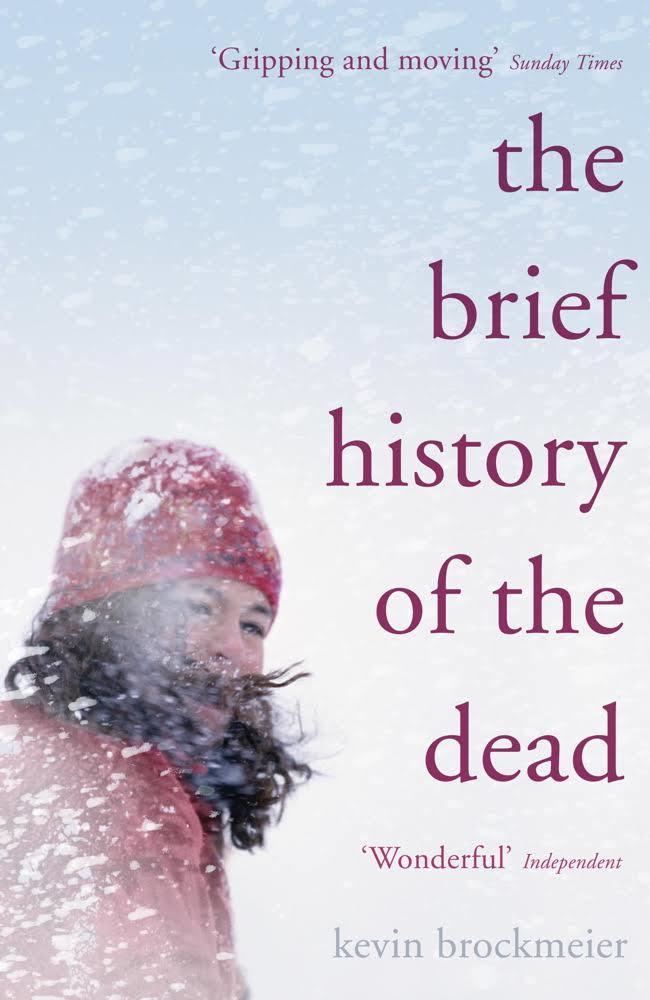7.4 /10 1 Votes7.4
Cover artist Archie Ferguson Publication date 2006 Originally published 2006 | 3.7/5 Goodreads Language English Media type Print (Hardback) Country United States of America | |||||||||||||||||||||||||||||||||
 | ||||||||||||||||||||||||||||||||||
Pages 252 pp (first edition, hardback) ISBN 0-375-42369-9 (first edition, hardback) Genres Fantasy Fiction, Adventure fiction Nominations Locus Award for Best Fantasy Novel, Nebula Award for Best Short Story Similar Kevin Brockmeier books, Antarctica books, Fantasy books | ||||||||||||||||||||||||||||||||||
The afterlife in the brief history of the dead by kevin brockmeier
The Brief History of the Dead is a fantasy and adventure novel by Kevin Brockmeier.
Contents
- The afterlife in the brief history of the dead by kevin brockmeier
- The brief history of the dead a funny skit
- Plot introduction
- Plot summary
- Characters
- Release details
- References
The brief history of the dead a funny skit
Plot introduction
The story takes place in two realms concurrently in the middle of the 21st century: On earth in the United States and Antarctica, and in a place beyond death called The City. The people in The City are there only as long as someone who remembers them is still alive on earth. They arrive, usually with the realization that they have died, and become members of the community there in ways similar to when they were alive. The City itself expands and contracts to accommodate the recently dead or the death of the last people to remember them.
On earth things have continued on the trajectories predicted at the beginning of the century: The polar ice caps are melting and biological terrorism is a major societal concern. However, the Coca-Cola Company is trying to make the best of both developments by planning to use water from Antarctica in its soft drink; they use publicity stunts which exploit people's fears in order to build brand interest. As part of their latest publicity stunt, they send a team of scientists to Antarctica to research the feasibility of using the "freshest water on earth", thus isolating their product from the regular water supply (which is assumed to be under constant threat of contamination at the hands of biological terrorists). A lethal virus is indeed released and as the global death toll mounts, the population of The City begins to fluctuate alarmingly. At first The City expands - entire buildings and blocks materialize to accommodate the new arrivals, but then, as the living who remember the departed also die, people in The City suddenly vanish and so do entire buildings and blocks.
There is no direct communication between the two realms. Those still alive know nothing of The City. Those in The City can only learn of events on earth by interviewing new arrivals, and indirectly through speculation on the reasons for the growth and decline of The City.
Plot summary
The story is set partly in the City and partly in the realm of the living, where Laura Byrd is stranded in Antarctica. The City segments focus on several different people in The City; as the book progresses, increasing numbers of the City's residents seem to just disappear, leaving friends and their relatives in mystery. The lethal virus slowly kills off each person in the living realm which results in the abrupt fluctuation in The City - each day, more and more people miraculously disappear (and areas of the City itself also begin to vanish) until the only remaining residents are those who were known to Laura Byrd.
Chapters set in The City alternate with chapters dealing with Laura's struggle for survival in the Antarctic and her gradual realization that she may be the last person left alive on Earth.
Although the exact group that spread the virus or their motives remain an unanswered mystery, the characters are eventually able to figure out how it was spread. The entire reason that the Coca-Cola Company wanted to use water from Antarctica's melting ice in its soda was because of the pervasive danger of bio-terrorism contaminating the water supply. The Coca-Cola Company saw an opportunity to profit from the population's fears, by selling them drinks from the guaranteed safe source of isolated polar ice. In truth, however, whoever spread the virus went right to the source, by infecting the syrup in the Coca-Cola bottling plants themselves. As the outbreak spread, many tried to save themselves by avoiding allegedly tainted tapwater and drinking nothing but Coca-Cola - which ironically guaranteed that they would be infected. Laura Byrd survived because, in addition to her isolated location, despite working for the Coca Cola Company she actually had a strong aversion against drinking its products.
